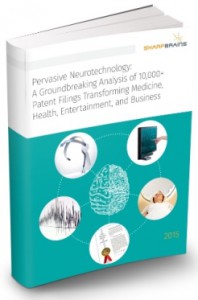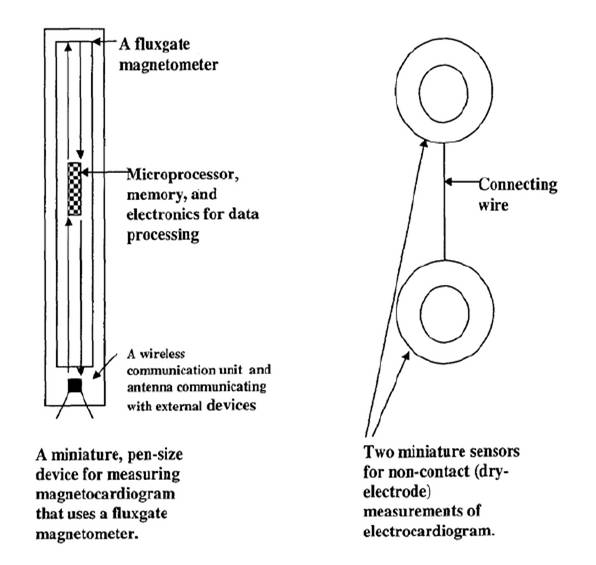Monitoring physiological and health data via non-contact sensors: Key neurotechnology patent #33
Today we discuss a neurotech patent very relevant to non-contact neuromonitoring sensors (as an alternative to skin-contact electrodes), which may play an important role in measuring brain activity in the near future.
U.S. Patent No. 7,485,095: Measurement and analysis of trends in physiological and/or health data
- Inventor(s): Vladimir Shusterman
- Technology Category: Hybrid
- Issue Date: February 3, 2009
SharpBrains’ Take:
The ‘095 patent describes teachings to address some of the medical treatment problems associated with non-contact sensors, such as electrocardiographic (EGG) and magnetocardiographic (MCG) sensors. Non-contact sensors, as an alternative to skin-contact electrodes, may play an important role in measuring brain activity. While non-contact sensors provide advantages over contact sensors in that they can be used for extended periods without patient discomfort due to skin irritation, non-contact sensors have traditionally been either too large for practical use or produce poor signal detection quality. By considering two levels of signal analysis (with techniques summarized in the abstract and recited in the illustrative claim) the ‘095 patent discloses a system employing non-contact sensors that is small enough to be portable but does not compromise signal quality. The improvement in the area of non-contact sensors that hold the potential for advancing brain-activity detection technologies, coupled with the extensive claims set comprising five independent claims covering various embodiments and 35 dependent claims covering various features, are among the factors making the ‘095 patent a key non-invasive neurotechnology patent.
Abstract:
System comprised of a portable medical device and method for registering at least one of electrocardiographic (ECG), magnetocardiographic (MCG), physical activity, body position, respiration, temperature, blood pressure, vasomotor activity, blood flow, neural activity, and other physiological, and health data, extracting and representing the most significant parameters from time series (trends) of said data. The system achieves the necessary sensitivity (signal-to-noise ratio) in order to miniaturize the device by collecting data of at least one fiducial point in a cardiac complex over a period of at least one, and preferably, several seconds, and extracting the underlying typical patterns from these data. Due to the miniaturization (pocket-size), the system can be implemented in a shape of a pen (or another miniature shape) that can be worn in a pocket.
Illustrative Claim 1. A method for registering at least one of electrocardiographic (EGG), magnetocardiographic (MCG), mechanocardiographic, ballistocardiographic data, physical activity, body position, respiration, temperature, blood pressure, vasomotor activity, physiological, and health data, extracting and representing the most significant parameters from series of said data, said method comprising:
- collecting said data from at least one fiducial point in a physiological cycle over a period of at least several seconds;
- analyzing said data in low-level-of-detail to extract significant features from monitored signals and compare said features with reference values, said low-level-of-detail analysis applied locally, close to the point of data acquisition; and
- analyzing said data in a higher-level-of-detail to identify at least one of short-term and long-term trends of changes in said significant features using at least one method selected from mathematical decomposition, mathematical modeling,
 To learn more about market data, trends and leading companies in the digital brain health space –digital platforms for brain/ cognitive assessment, monitoring and enhancement– check out this market report. To learn more about our analysis of 10,000+ patent filings, check out this IP & innovation neurotech report.
To learn more about market data, trends and leading companies in the digital brain health space –digital platforms for brain/ cognitive assessment, monitoring and enhancement– check out this market report. To learn more about our analysis of 10,000+ patent filings, check out this IP & innovation neurotech report.



